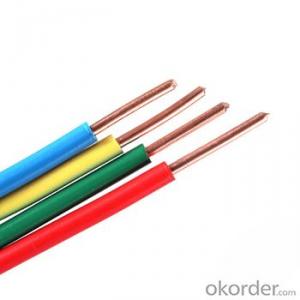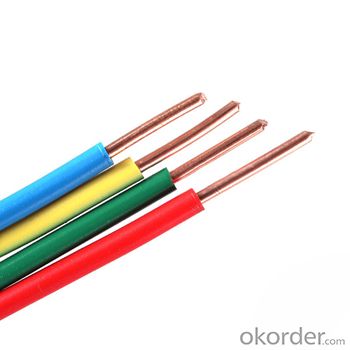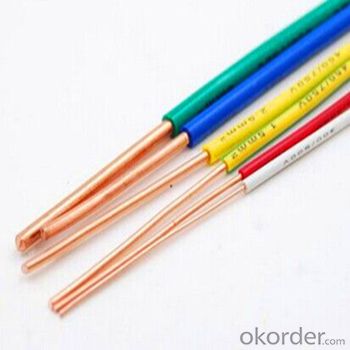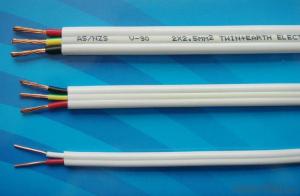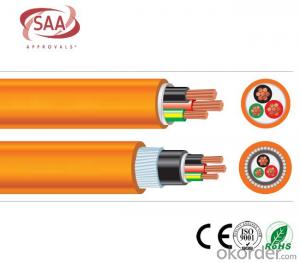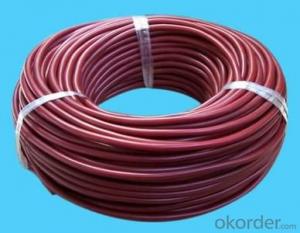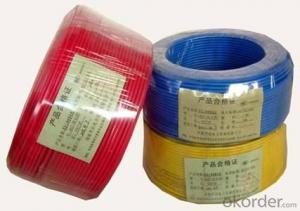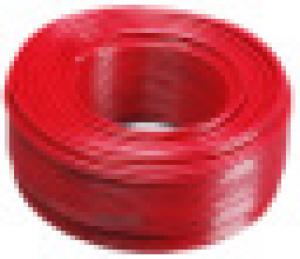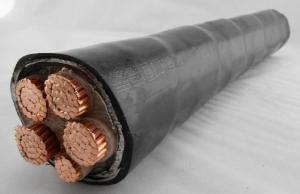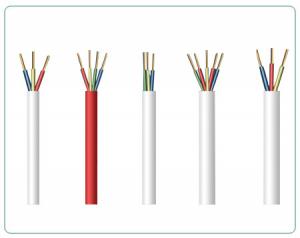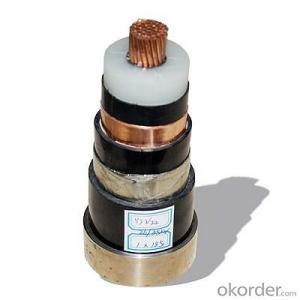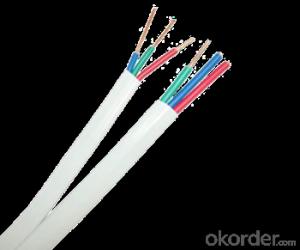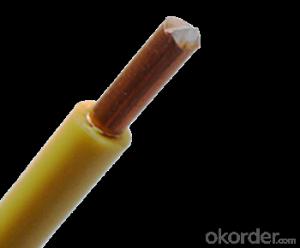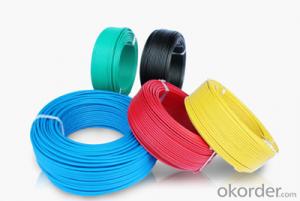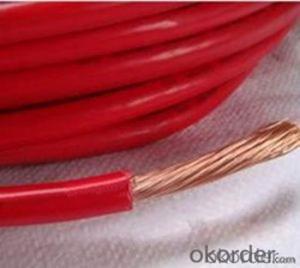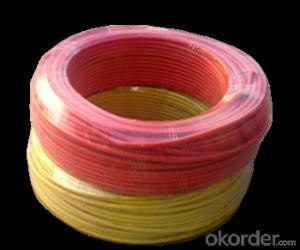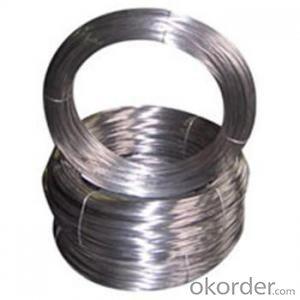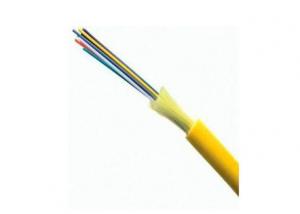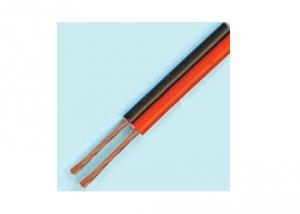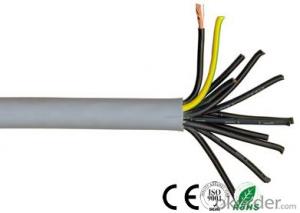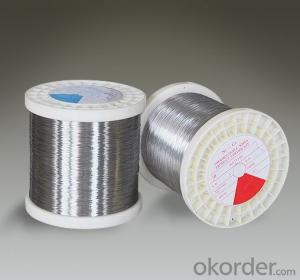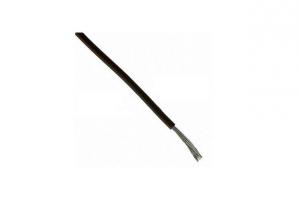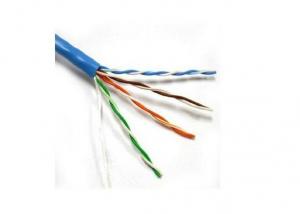High quality BV Electric Wire with a good price
- Loading Port:
- Qingdao
- Payment Terms:
- TT OR LC
- Min Order Qty:
- 10000 m
- Supply Capability:
- 100000 m/month
OKorder Service Pledge
OKorder Financial Service
You Might Also Like
BV Electric Wire
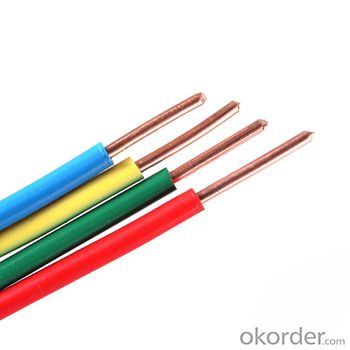
Introduction
Product: BV / Hard wire for fixed installation(ZR-BV、NH-BV)
Academic name: Copper Core PVC Insulated Wire
Model: BV
Conductor material: Non-oxidized copper core (copper content: 99.99%)
Number of cores: single core
Insulation materials:PVC
Colour: red, yellow, blue, green, black, white, two-color, etc
Features
BV electric wires is called copper core PVC insulated wire,that is, ordinary single-core hard conductor without sheathing cable, which is used in our daily life of ordinary insulated wire, home improvement wire, is the most commonly used type of the electric wire.
This product is made of high quality oxygen-free copper and environmentally friendly PVC, the performance of the products are in line with national standards GB / T5023.3-2008 / IEC60227-3: 1997.
With anti-acid-base, oil resistance, moistureproof, mouldproof and other characteristics.
Species
Divided into ordinary, flame retardant, fire-resistant.
Ordinary: For residential, commercial buildings and industrial power distribution circuit (BV)
Flame retardant: In order to prevent the secondary fire spread as a target (ZR - BV, the ZA - BV, ZB - BV, ZC - BV)
Fire-resistant: Fire-fighting system (NH - BV)
The long-term permissible operating temperature of all types of cables shall not exceed 70 ℃. The laying temperature of the cable shall not be less than 0 ℃. The outer diameter (D) is less than 25 mm cable allowed bending radius should not less than 4D. The outer diameter (D) of 25mm and above the allowable bending radius of cable should not be less than 6D.
Application
This product is suitable for AC rated voltage 450 / 750V and below, requiring the use of fire-retardant occasions of electrical, instrumentation, telecommunications equipment, power equipment and lighting lines fixed laying.
Model
1.BV electric wires according to the conductor cross-sectional area can be divided into 01,05,07 three models, different models have different characteristics:
| BV Classification | |||||
| Model | Academic name | Insulation materials | Model specification | Rated voltage | Application |
| BV01 | Copper Core PVC Insulated Wire | PVC | General purpose single core hard conductor unshielded cable | 450/750V | Power equipment, household appliances, instruments and telecommunications equipment |
| BV05 | Copper Core PVC Insulated Wire | PVC | The internal wiring,Single core solid conductor unshielded cable with a conductor temperature of 70 ℃ | 300/500V | |
| BV07 | Copper Core PVC Insulated Wire | PVC | The internal wiring,Single core solid conductor unshielded cable with a conductor temperature of 90 ℃ | 300/500V | |
2.BV electric wires according to the different properties, the product can be divided into insulation, flame retardant, fire-resistant three categories, different uses of different categories:
Model | Designation | Use occasion |
BV | Copper Core PVC Insulated Wire | Home improvement, power with fixed wiring |
| ZR-BV | Copper Core PVC Flame-retardant Wire | With a fire-retardant requirements of home improvement, power fixed wiring |
| NH_BV | Copper Core PVC Fire-resistant Wire | Fire, emergency and other special requirements of fixed wiring |
Introduction of our company
Our company is a professional China Wire and Cable Manufacturers, mainly supply Aerial bundled cable,House Electric Wire, Insulated Overhead Cable,Aluminium Conductor Steel Reinforced, PVC Control Cables,XLPE Power Cables,BV Electric Wires,Nylon Sheathed Cable,Buried Cable,High Voltage Cable,House Electric Wire,Single Core Flexible Copper Cable,Civil Wire And Cable etc. series of wire and cable products, sincerely welcome everyone to visit.
- Q: I keep having a dream (at least once a week) where I'm working on electrical wiring in someone's house. I'm either wiring a circuit panel, pulling wire for a new circuit, etc. I'm 16 years old.
- Electrical wiring would be a symbol of the way someone is wired. Whose house are you doing the wiring?
- Q: and what do i do with the ground and neutral when switching from an outlet that has a spot for all four wire to one that only has three where does the ground go
- Al is aluminum and CU is copper (basic chemical symbols). Everything else that has been answered thus far is wrong. AL is bigger for the same ampere rating, but it is not double. Not ALL aluminum wiring is dangerous. Many (most?) houses have SOME aluminum wiring that is just fine. DIY's shouldn't be doing electrical work they don't understand, and aluminum is more picky about being installed properly. One answer described 4 iwires including bare and green. Only one or the other will be present. Now, what is it you are doing that you are switching from 4 wires to 3 wires? My first guess is a range or dryer outlet in a house. If that is the case, it is illegal to change from 4 wires to 3, and you should get the proper cord for your range or dryer that has a 4 prong plug on it.
- Q: I know that electrical resistance will decrease if you increase the cross-sectional area of the wirebut if that's the case, then why aren't wires made larger?? There must be some reason, some con to increasing the 'A'? I haven't touched Physics since high school, so I really don't remember. Thanks.
- There would be no point to using larger diameter conductors. They are kept to a useable minimum, mainly because of cost. If you double the diameter of a wire's cross section, it has 4 x the area, and weight, and therefore cost. Aluminium wires are now often used for further cost reduction and weight savings.
- Q: 16 square millimeters of wire how rough how to calculate
- According to the norms of the words can not. A line of a tube, unless the control line and then wear a tube no problem. Air conditioning line is not very standardized, according to the provisions should be 16 square below, are the same diameter. But the words of their own home can be used. Specifically to see how you set the.
- Q: Ready to exchange water heater, Q: . the toilet socket is 10 An, the wire is aluminum. Is it necessary to replace the socket or wire? If you have to change the line, you can also use the old trunking do not move only? . water heater to buy 1500W a good file or buy ..2000W third gear good? ...2000W third gear water heater can only be heated semi-bile water? How to control the heating of the whole box of water and semi-bile water? More
- 1. Floor pavement composite floor (the following do not shop mats or shop 2 cm below the floor mat) The ground is to slot, and then the tank after the tank also use cement powder flat to facilitate the laying of the late floor. Floor flooring (flooring 3 cm above the floor of the mat) the ground can not slot .3 ground flooring solid wood flooring or multi-board (ground loaded keel) the ground can not slot .4. Ground floor tiles can not open the ground The wall of the latex paint the wall must be slotted .6. Wall tile tile wall must be slotted .7. Top of the ceiling tube directly outside the top do not need to slot .8. Top no The top of the ceiling line to be slotted, and the top can not take the PVC pipe.We can use the tape to wrap the wire or directly with the jacket line directly to the top.
- Q: I was wondering if exposed copper wire (and regular wiring) could cause dizziness and headaches.Or could insulating maybe cause it to?
- There is a certain emanation from copper. If you are reacting, it would suggest your system is riding along a very thin line.You have a sensitivity aggravated by an outside source. You have a chronic problem with a part of the nervous system which becomes acute when exposed to that outside source. In this particular instance we refer to the otic (auditory) nerve. If you have no other symptoms then would suggest staying clear of the offending material.If you do have other symptoms then would suggest a visit to your local doctor of Chiropractic and find out what is the causative factor. I just had someone come to see me for the same problem, dizzyness. Only without any factor to cause it. There was found a pronounced structural tenseness which causes several other problems also. She left without the dizzies and even stood much straighter Which seemed to allow much greater depth of breathing.Has asthma also but, is the result of restricted expansion of the chest by that muscular tension.
- Q: Found a wire in my attic right by the hatch with about 2 of it burnt. I didn't see any bare wire exposed, but pretty close. It's not at a connection. There is a little bit of insulation singed around it.Maybe I nicked it when I climbed up there a few months ago? Maybe a squirrel or something was gnawing on it? I didn't see or smell anything dead.Or could it be it's just wired wrong?I'm pretty worried because it's connected to my smoke detectors that were wired last fall. I have 6 of them and they are all connected to their own separate breaker. So if it starts a fire and shorts them out I would never know.
- Yes to above. Your wiring is probably to small of gage for the electrical load you are using. And the next time you may burn your home down. Don't delay.
- Q: I want to replace a switch (not 3 way) with a switch that also has a plug on it. Does it wire the same? If you could check out my other question
- Your new switch/receptacle combination will need 3 wires. The old power and switch leg, (lead to the light), will need to be connected as well as a neutral, (white), which will need to be connected to other neutrals in the box. I noticed from a previous question, that one of your whites was a switch-leg. Some switch boxes don't have a neutral wire. If this is your case, don't do it.
- Q: If you have hot wires, then electrical energy is being used to heat the wires. Is this an efficient use of electricity? Explain.Question is related to the general area of circuits, resistance, current, voltage etc.Any help would be appreciated :)
- interior america of united statesa. the national electric powered code for wall retailers call for utilising 12 gauge cord and a 20 amp breaker and a 20 amp outlet. they might desire to be sized jointly like this. once you're utilising heavy accountability kit that attracts extremely a super form of amps then maximum powerful have a million outlet on that circuit. You extremely could seek for suggestion from a close-by electrician in this.
- Q: can i use speaker wire to replace a section of wire that runs 2 12volt led lights in my car without it causing a fire?
- Yes all your doing is getting power from one point to the next.
Send your message to us
High quality BV Electric Wire with a good price
- Loading Port:
- Qingdao
- Payment Terms:
- TT OR LC
- Min Order Qty:
- 10000 m
- Supply Capability:
- 100000 m/month
OKorder Service Pledge
OKorder Financial Service
Similar products
Hot products
Hot Searches
